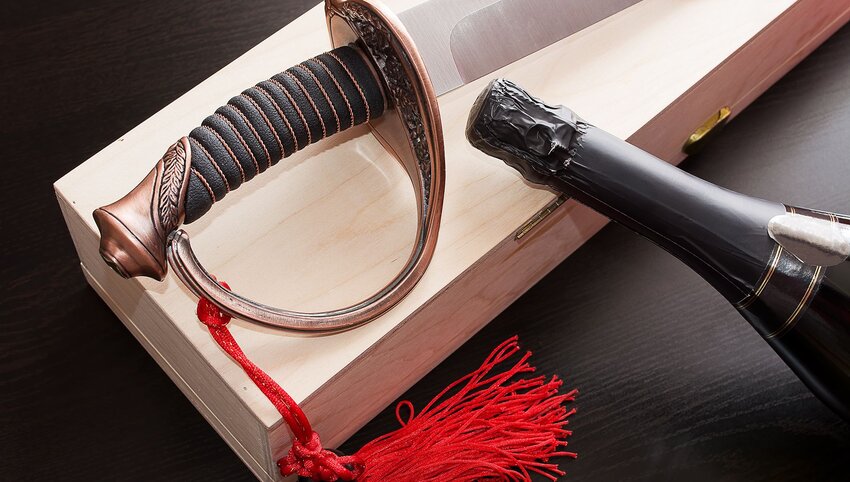The chance to participate in a cultural or religious ceremony while you’re traveling is a real privilege. It’s a chance to learn about traditions and practices that are far removed from our own everyday experiences. However, poking our noses or our cameras into someone else’s business is definitely not the way to go. Wait for an invitation – whether serendipitous or scheduled as part of a tour – and be respectful at all times. We’ve picked five ceremonies around the world you should experience.
The Land Divers on Pentecost Island, Vanuatu

It’s one of the most dramatic and dangerous ceremonies on the planet. Part coming-of-age, part show-of-masculinity, the land diving ceremony on Pentecost Island is a chance for young local men to prove themselves. These young men put on a necklace of boar tusks and tie tree vines around their ankles, before climbing a wooden tower to one of several platforms that can be anywhere from 60 to 100 feet high. Then, in a move that inspired New Zealand’s bungee jump pioneer AJ Hackett, they dive head first and plummet towards the ground. If they manage to execute the dive perfectly, their shoulders will gently brush the dirt.
This heart-stopping ceremony happens each year during the island’s Yam Festival, typically in April, May, or June. When a boy is ready to become a man, he can participate; after he has jumped, his mother will throw away an item representing his childhood, signifying that he has now become an adult. Though it’s considered a show of bravery, islanders also believe that land diving brings good luck and ensures a successful harvest.
Water Purification Ritual at the Tirta Empul Temple in Bali
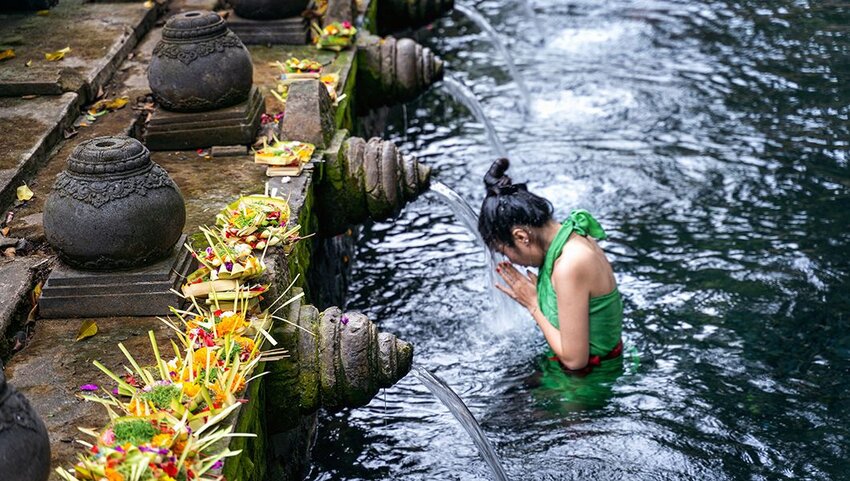
Balinese Hindus visit the Tirta Empul temple near Tampaksiring to participate in a cleansing ritual. The temple was built around a natural spring in the 10th century. To the Balinese, this is holy water blessed by the god Indra. As a result, it’s one of the holiest temples on this Indonesian island. In the jaba tengah area of the temple, the springs bubble up and water pours into two sacred purification pools via thirty ornamental spouts. Those who wish to perform a ritual called melukat dip their head under the first of the waterspouts, patiently waiting to repeat the process until they have done so under all of them except two. (These are reserved for cleansing the dead.) Balinese worshippers will then move across to the jeroan area to pray.
Alms-giving in Luang Prabang, Laos
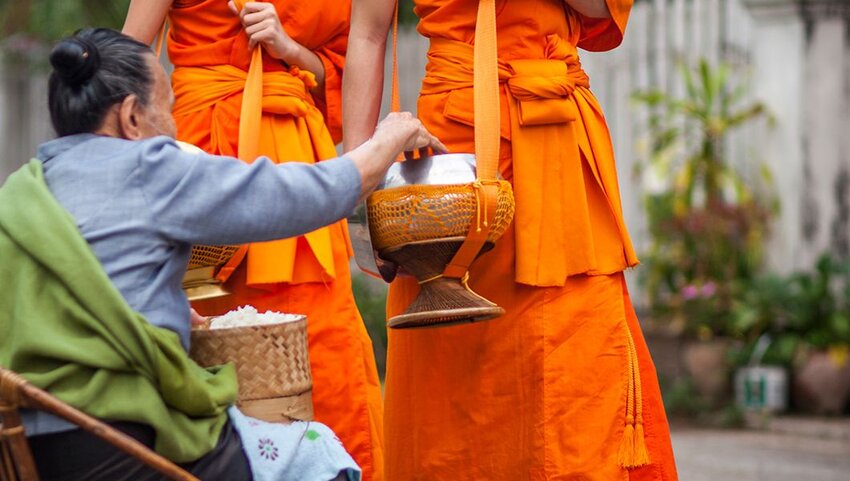
Alms-giving has been a tradition in Laos since the 14th century, but is most closely associated with the city of Luang Prabang. This religious ceremony, called “Sai Bat” or “Tak Bat,” takes place each day shortly after sunrise. A large number of Buddhist monks, barefoot and clad in orange robes, process along the main street. They receive gifts of food, usually sticky rice or fruit, from local residents. It’s a win-win situation: the monks get fed and devotees earn merit by doing a good deed. Tourists are welcome to join in. To do so, dress modestly as you would when visiting a temple, covering your shoulders and knees. You should remove your shoes and socks and kneel so that your feet are hidden. In complete silence and with head bowed, offer the food to a monk as he passes by placing it in his bowl.
Champagne Sabrage Ritual at the St. Regis, New York
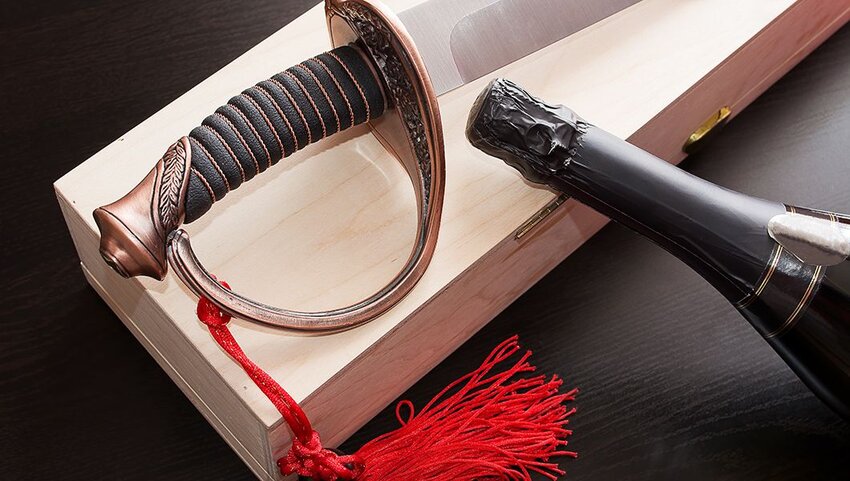
Though not quite a sacred ritual, this practice at the St. Regis Hotel in New York has a storied history. In 1904, when he opened the St Regis Hotel in New York, John Jacob Astor IV began a tradition involving a bottle of champagne and a small curved sword called a sabre. The vintage is important – young is ideal as it exerts just the right amount of pressure on the cork. Ceremoniously, the sommelier removes the sword from its protective sheath. They carefully remove all traces of the foil and discard the wire cage. Next, they run the sabre gently back and forth along the neck of the bottle. Pointing the bottle upwards at an angle, they bring the blade up sharply. The sword meets the glass at its weakest point, and the pressure inside the bottle ensures the cork will fly neatly from the bottle allowing the champagne to be poured to a round of applause. But although Astor introduced this ceremony to New York, he probably copied the idea from Napoleon Bonaparte. After battle, win or lose, the French leader would grab a sword and a bottle of fizz and either celebrate or drown his sorrows.
Japanese Tea Ceremony
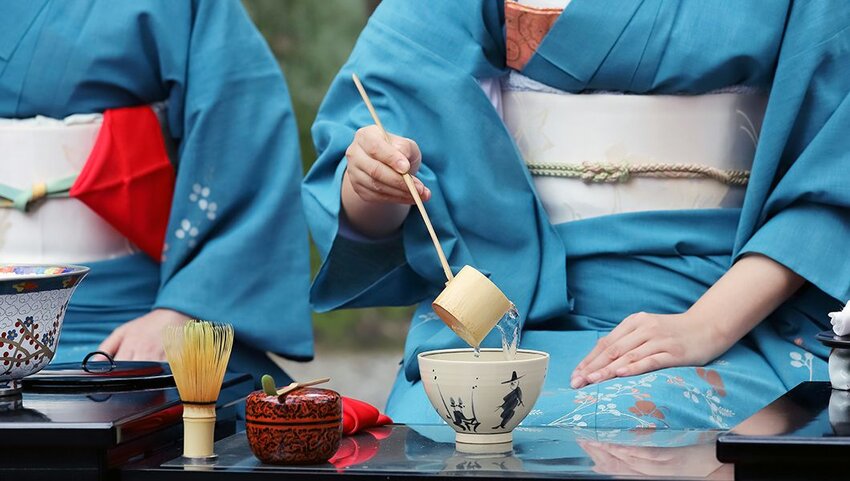
The Japanese tea ceremony is a genteel occasion laden with symbolism and meaning. The Chinese introduced tea to the Japanese in the eighth century. Fast forward a few centuries and tea-drinking parties became fashionable and the rich would try to impress their friends with their beautiful tea bowls and demonstrate that they could serve the perfect cup of tea. In the 16th century, a man named Sen no Rikyu developed a simple ceremony that focused more heavily on spirituality. Today’s methods echo his teachings. Guests kneel seiza-style on tatami mats while the host prepares the drink from powdered tea. The correct etiquette involves much bowing, sipping, and rotating the bowl. There’s a lot more to chadō ("the way of tea") than simply boiling a kettle and throwing a teabag in a mug.

